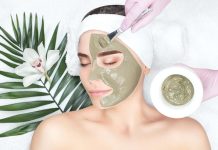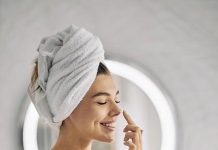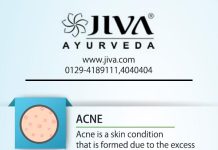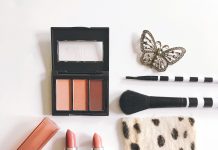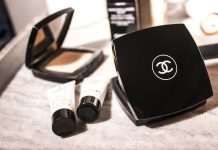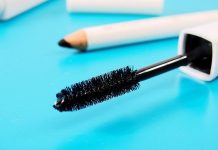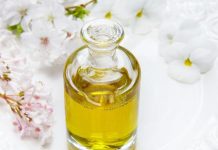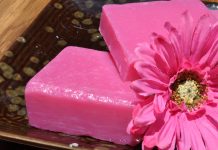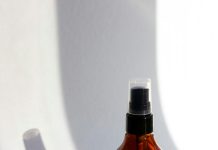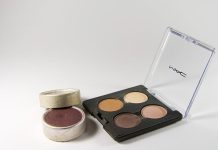In recent years, the clean beauty movement has swept across the skincare and cosmetics industry, promising products free from harmful chemicals and infused with natural goodness. But as shelves brim with “clean” labels and eco-friendly promises, a pressing question emerges: Is this movement a genuine revolution for our health and the planet, or just another marketing mirage? As we delve into the essence of clean beauty, we’ll explore its potential benefits and the skepticism it faces, unraveling whether this trend is a beacon of positive change or simply overhyped allure.
Understanding the Origins and Growth of the Clean Beauty Movement

The clean beauty movement emerged as a response to growing consumer awareness and concern about the ingredients in personal care products. Rooted in the desire for transparency, this movement advocates for the use of non-toxic, sustainable, and ethically sourced ingredients. It began gaining momentum in the early 2000s, fueled by a combination of environmental activism and scientific research highlighting potential health risks associated with certain chemicals in cosmetics.
As awareness spread, key factors contributed to the movement’s growth:
- Consumer Demand: Increasing demand for products that align with personal values.
- Regulatory Gaps: Limited regulation in the beauty industry, prompting consumers to seek safer alternatives.
- Influence of Social Media: Platforms that amplify consumer voices and facilitate brand accountability.
This shift has led many brands to reformulate products and prioritize transparency, although debates about the efficacy and necessity of such changes continue to spark discussion.
Analyzing the Scientific Claims: Are They Backed by Evidence

The clean beauty movement touts a plethora of scientific claims, yet it’s essential to scrutinize whether these assertions are genuinely backed by solid evidence. Many products within this movement boast labels such as “non-toxic,” “chemical-free,” and “natural,” but these terms often lack standardized definitions and regulatory oversight. This ambiguity can lead to confusion among consumers, who may assume these products are inherently safer or more effective without substantial scientific validation.
While some studies suggest potential benefits of using products free from certain synthetic chemicals, the evidence is often limited or inconclusive. Considerations include:
- Ingredient Safety: Many ingredients vilified by the movement, like parabens and sulfates, have been deemed safe at low concentrations by regulatory bodies such as the FDA and the EU.
- Natural vs. Synthetic: The notion that “natural” equals safer is not always accurate. Natural ingredients can also cause allergic reactions or skin sensitivities.
- Scientific Consensus: A lack of comprehensive, peer-reviewed studies on the long-term effects of clean beauty products leaves room for debate.
Ultimately, while the clean beauty movement raises valuable discussions about ingredient transparency and safety, its scientific claims should be examined with a critical eye to avoid falling prey to marketing hype.
Consumer Perceptions and Market Trends: What the Data Reveals
Recent data underscores a fascinating shift in consumer attitudes toward clean beauty, revealing a nuanced landscape of preferences and behaviors. Surveys indicate that a significant portion of consumers are increasingly valuing transparency and sustainability in their beauty products. This shift is driven by a desire for natural ingredients and ethical sourcing, suggesting that the movement resonates deeply with environmentally conscious individuals. However, the data also uncovers skepticism among some consumers who question the efficacy and authenticity of clean beauty claims.
- Growing Demand: Products labeled as “clean” or “natural” are seeing increased sales, particularly among younger demographics.
- Transparency Matters: Consumers are demanding more information about ingredients and production processes.
- Trust Issues: A notable percentage of consumers remain wary, citing concerns over the lack of regulation and potential greenwashing.
Market trends further illustrate that brands embracing genuine sustainability practices are likely to foster greater consumer trust and loyalty. As the clean beauty movement evolves, it becomes crucial for companies to balance marketing claims with tangible, verifiable actions. The data reveals a clear message: authenticity and transparency are not just buzzwords—they are essential components of consumer trust in this burgeoning market.
Practical Tips for Navigating Clean Beauty Choices

When exploring the world of clean beauty, it’s essential to arm yourself with practical strategies to make informed choices. Here are some tips to guide you:
- Read Labels Carefully: Familiarize yourself with common ingredients and their potential effects. Look for products that are transparent about their formulations.
- Research Brands: Investigate the ethos and sustainability practices of brands. Many companies offer insights into their sourcing and manufacturing processes.
- Prioritize Your Needs: Focus on what matters most to you, whether it’s cruelty-free certification, organic ingredients, or minimal packaging.
- Patch Test New Products: Before committing to a full-size purchase, test new products on a small skin area to ensure compatibility.
- Stay Informed: Follow reputable beauty blogs and forums to keep up with the latest research and trends in clean beauty.
By taking these steps, you can confidently navigate the clean beauty landscape and make choices that align with your values and skincare goals.

